
Dirt in every orifice. Cameras covered in dust. The sound of popping and banging exhausts echoing around my head even days later. Neck and arms aching from trying to keep up with the rocketship acceleration of the cars. It can only be rallycross. Ah, it’s good to be back. The opening round of the 2013 Rallycross RX series – the new name for the European Rallycross Championship – at Lydden Hill delivered all the usual joyous sensations that I’d been missing, with an even bigger treat courtesy of Messrs Solberg and – for one week only, ladies and gentlemen – Foust.

The biggest coup for the series is that addition of 2003 World Rally Champion Petter Solberg to the list of 15 permanent Supercar entrants who will contest the whole year. And boy did he deliver on the his ‘Hollywood’ nickname.
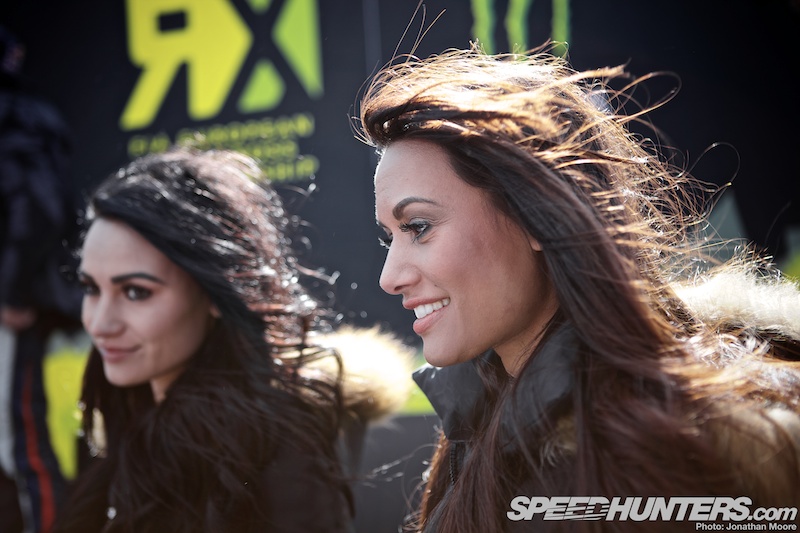
The new promotion for the series has made a noticeable difference: series branding is more prominent and there just seemed to be a general air of increased professionalism, helped by Monster once again being on board for the UK round – adding both glamour and that added energy kick to the proceedings.
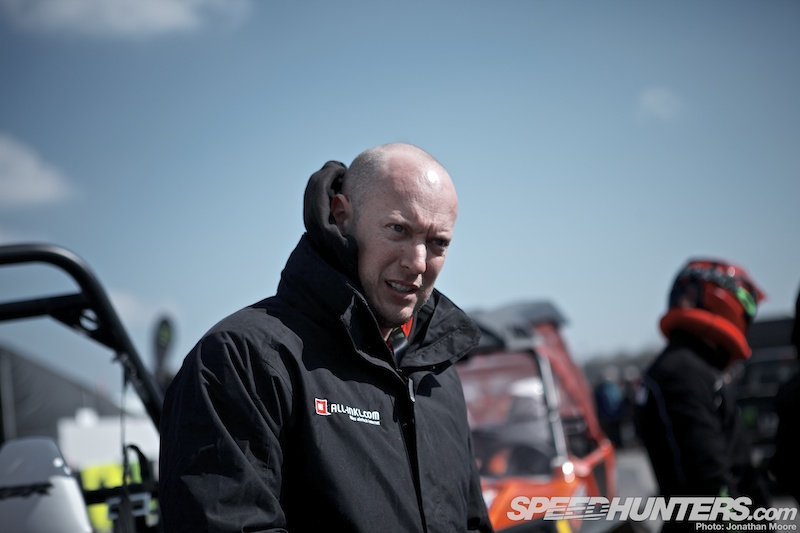
Solberg was naturally the big draw, but there were some more unexpected racing VIPs roaming the paddock. World Touring Car Champion Rob Huff is driving for the Munnich Motorsport team in the WTCC this year, so popped down to the UK’s south coast with René Munnich’s outfit to check out the action. Team boss René is a longtime RX competitor in Super 1600, and Rob took the opportunity to also sample Lydden from the cockpit of a Polaris ATV during a break between heats.

Along with the new approach to promoting the series, the biggest change for Rallycross in 2013 involved the track time and heat organisation, with the aim being to make the racing even more frantic throughout the day to keep both fans and drivers satisfied.
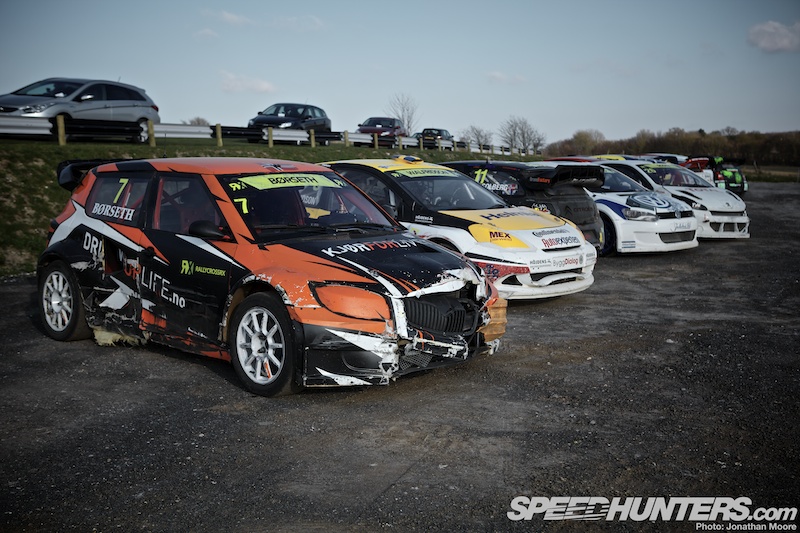
The first set of four Supercar class heats, each featuring five cars starting line abreast, were all about setting the fastest time rather than outright competition. The faster your time, the fewer points you’d be penalised with: fastest gets one point, second two, and so on down to 19 for the 19th position. Although the opposite of what you might be used to, it’s easy to see who’s finished where.
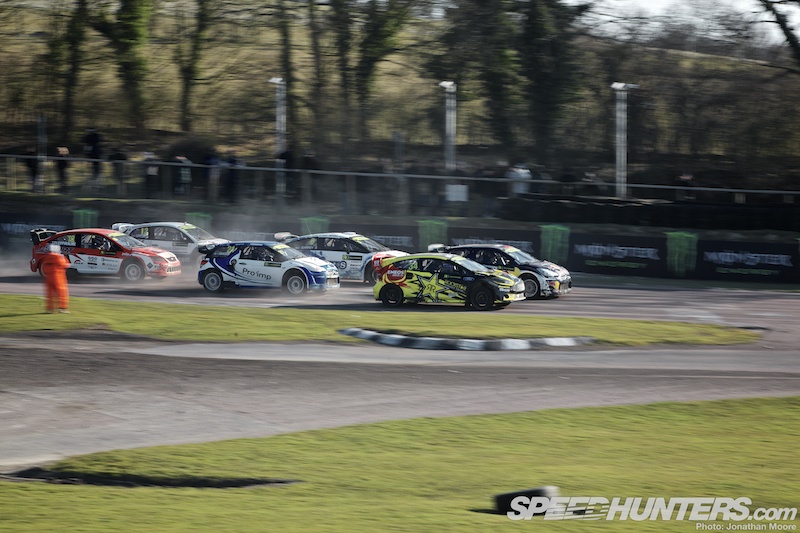
After the four heats, championship points proper are awarded from first to 16th position, (16 for the fastest time, decreasing to 1 point for 16th), and then the top dozen drivers take part in a pair of semi finals to set the grid for the final. The top three from each semi progress to the six-car final, with the cars arranged in three echelons.
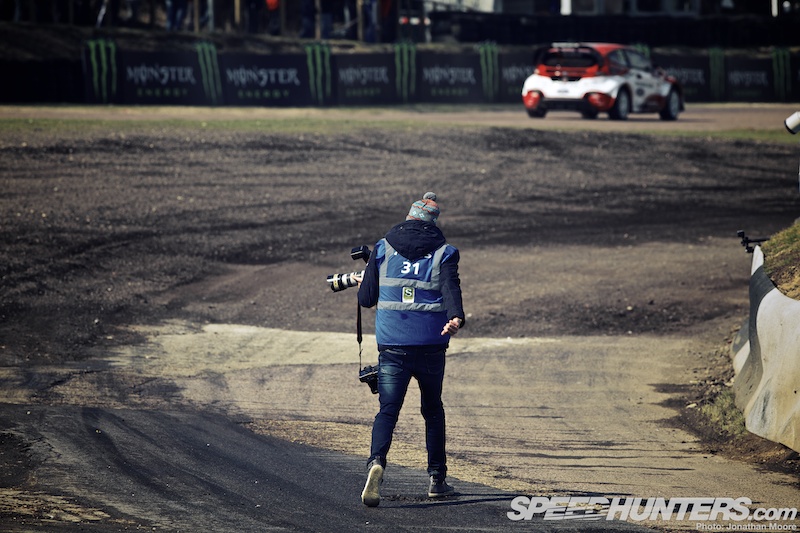
Shooting at Lydden Hill is quite an experience – something very different from the regular circuits we visit. For a start, crossing the track is the only way to get to the central island: you have to choose your moment carefully, get the attention of the marshals to guide you across – and then run.
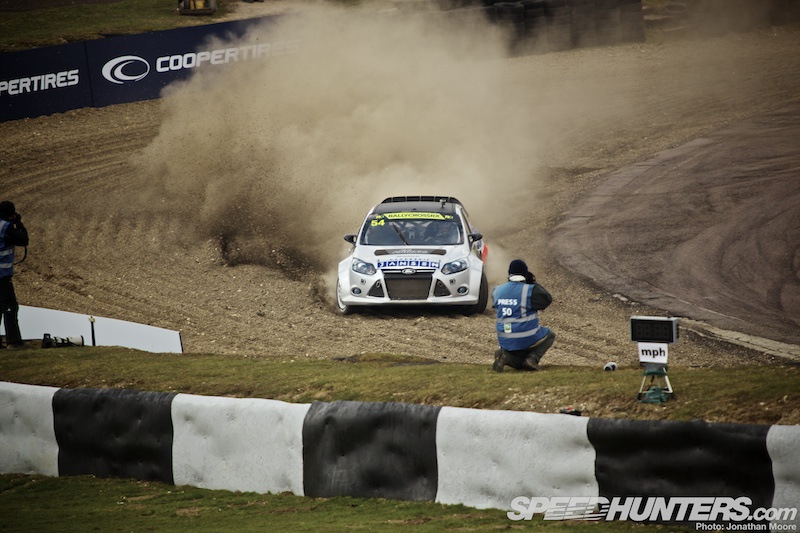
When you’re there you feel gloriously exposed but at the same time right at the heart of the action. Perched on a narrow ledge with cars firing around the track in a 360-degree arc, it’s a dizzying gravel and dust-strewn experience: especially when a car is coming straight at you.
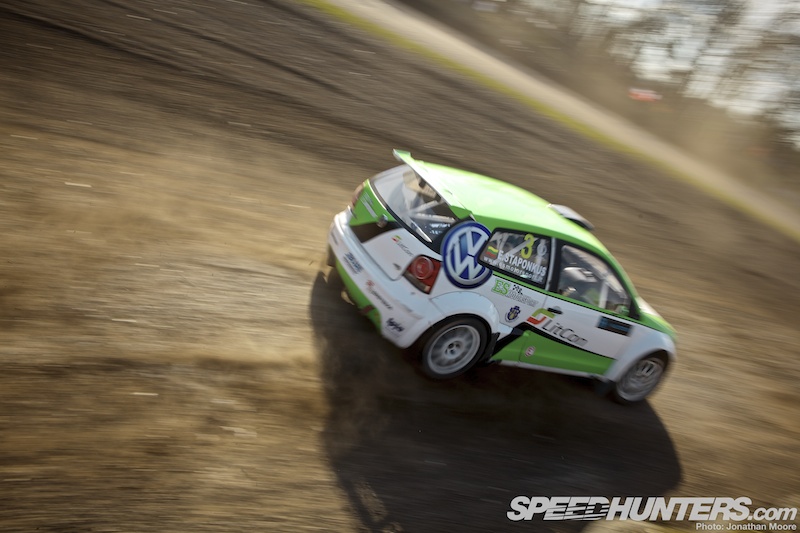
But then the reward is just how close you can get to the cars, particularly on the final leg of the course, as the cars graze the central island on their bucking bronco ride to the line. You could reach out and touch them, were it not for their defensive bombardment of stones.
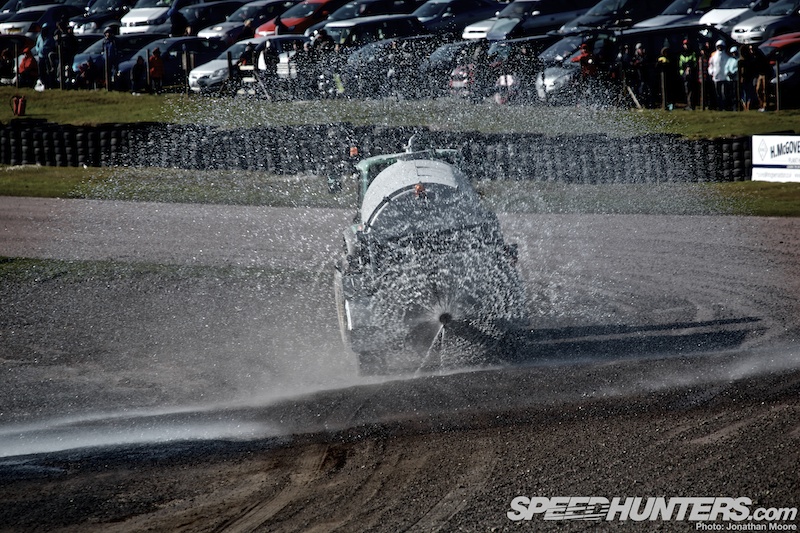
Nothing could dampen down the action: not even the water tanker that made frequent (though not frequent enough according to some drivers) passes.

But mayhem out on track is what we all expected. In fact, probably the only people not so thrilled with the changes were the poor mechanics, who were flat-out all around the paddock from dawn til dusk. And that’s the one thing in rallycross that never changes: the insane pounding the cars take.

The consumables on a rallycross racer basically seem to consist of everything from the front, right the way to the back. By the end of the day, most of the cars look like they’d been used for target practice by a particularly over-enthusiastic, shotgun-wielding madman, one who may well have been roaming the US desert just weeks before.
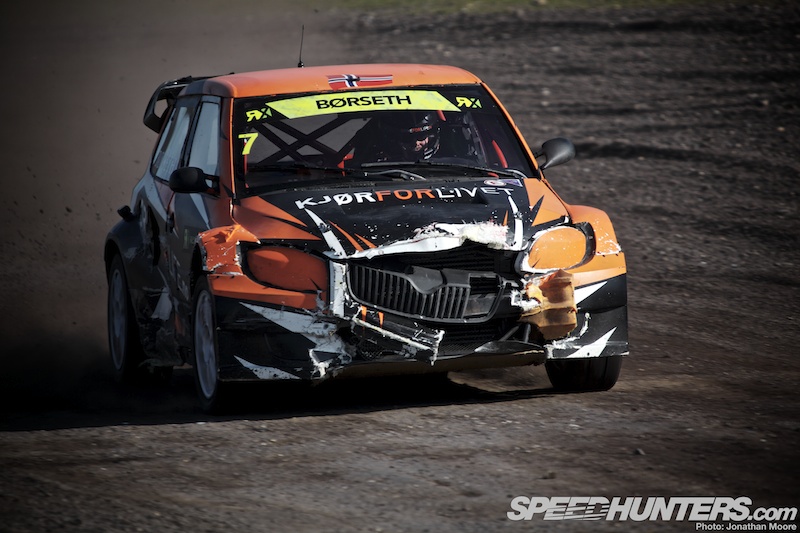
It was just brutal out on track: even without contact the cars were blasted by the stones and gravel, and the drivers unsighted by the clouds of dust thrown up by the cars ahead.
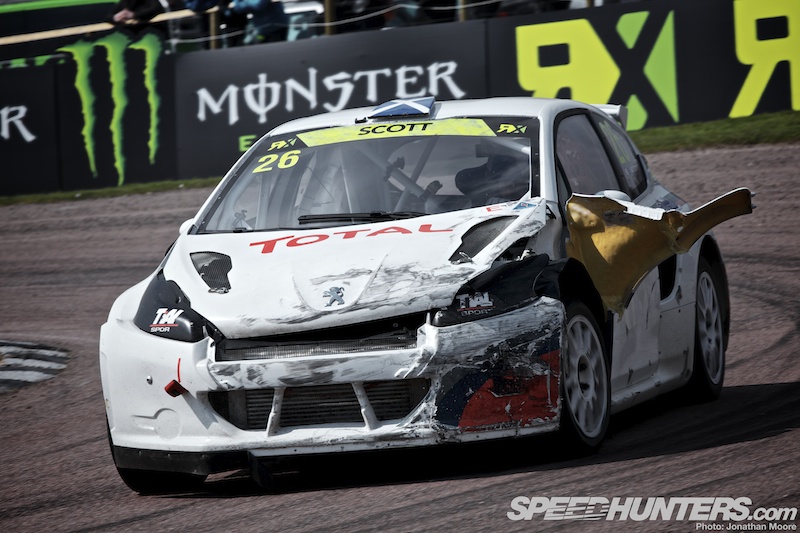
That meant nose damage was all too frequent, either from bumping the car ahead or through contact with the ever present barriers.
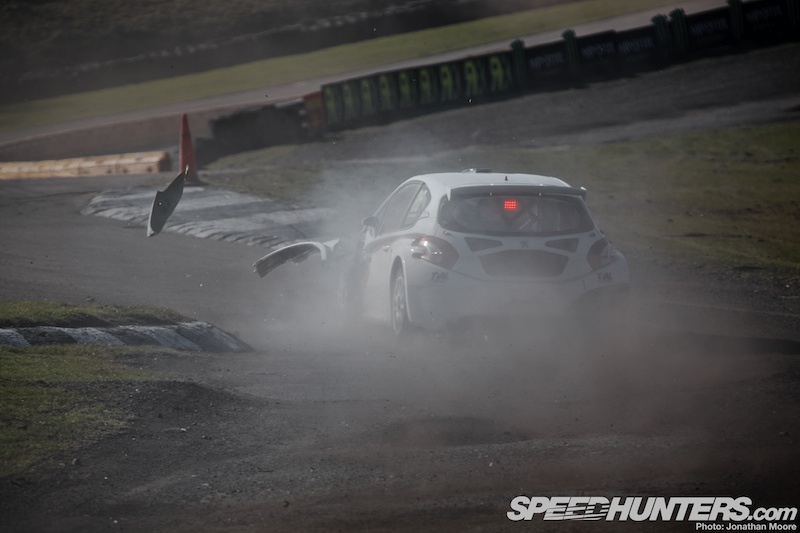
But no amount of damage can normally stop a rallycross car, short of total annihilation (or some devilish mechanical problem over which the driver has no control). The drivers plough on regardless, spewing panels as they relentlessly drive for the line and that all-important time.

Mechanical problems under the hood are one thing: a wheel hanging on by its final vestiges of remaining suspension is another, where eventually even a rallycross driver has to admit that it’s game over. This was Henning Solberg’s Saab being forklifted onto a recovery truck.
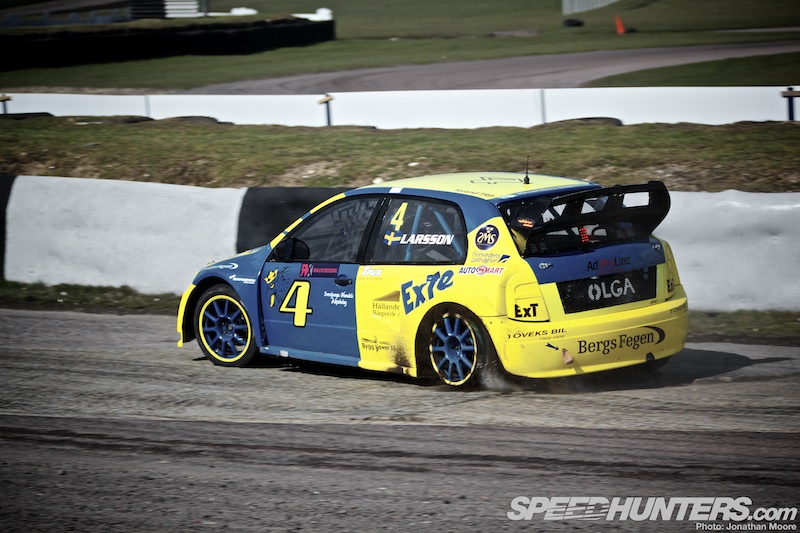
Tyres in particular take a real pounding in these drier conditions: each car is allocated a mere eight tyres per weekend, which is a seriously small number in the face of what the cars have to tackle. To an extent, the actual compound is irrelevant: any brand or tread pattern is allowed, but short of making tyres out of iron no rubber could be seriously expected to stand up to the constant attack, and as a result, punctures were frequent.
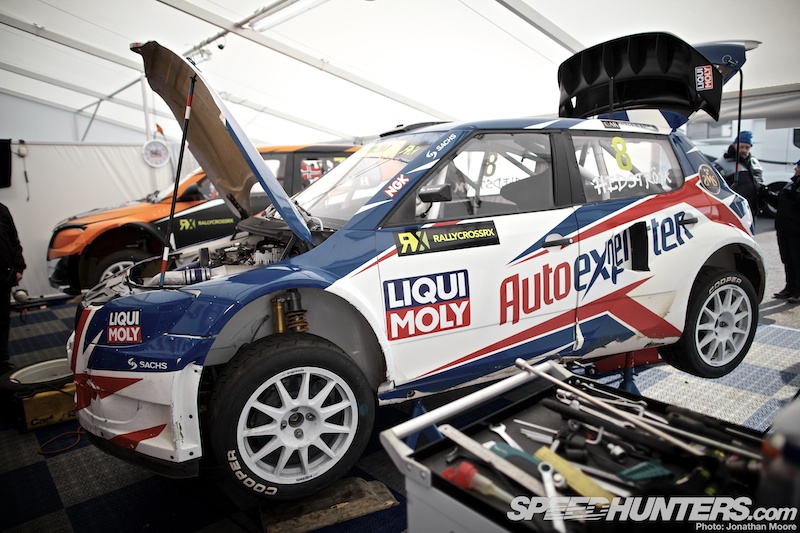
With the even further compressed schedule, between heats there was frantic work back in the paddock to get cars back in shape…
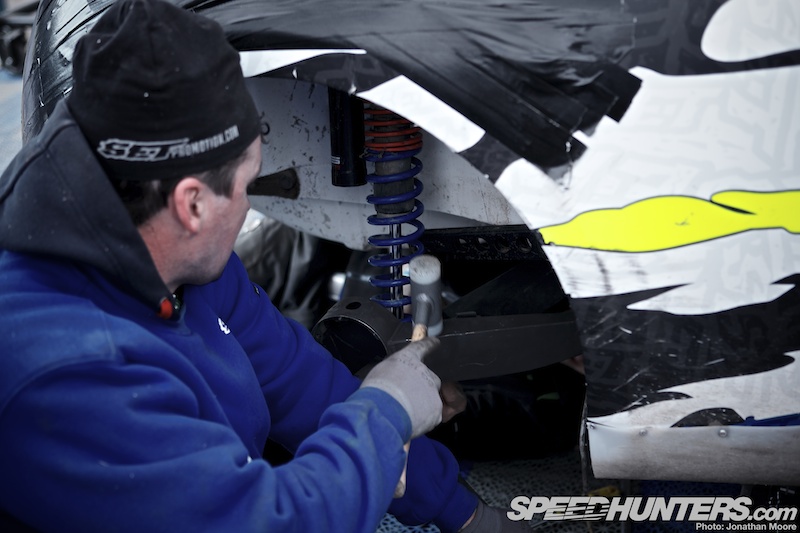
… that often involved hammers. The tool of champions.
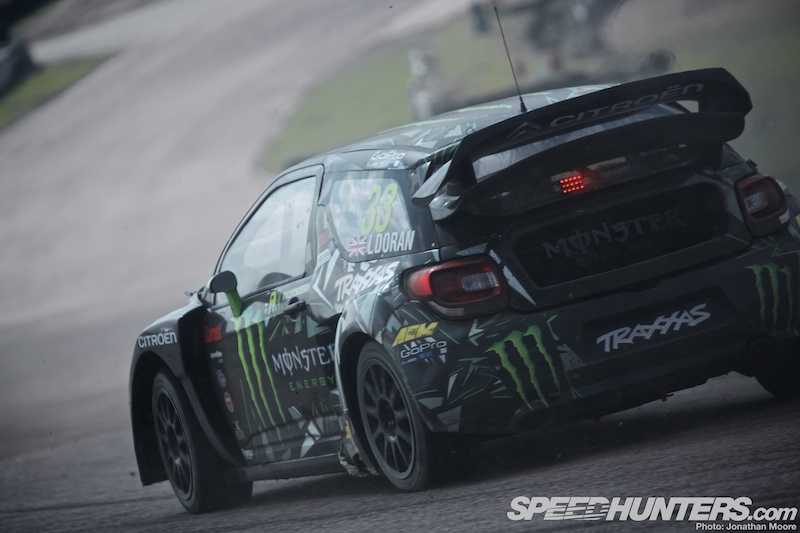
There have been some questions about the base models for Supercars and their relationship to World Rally Championship cars: some of the RX cars do use the same base shell, notably the DS3, which is supplied by WRC prep firm M-Technologies but then stripped back and the WRC-spec parts replaced with a more bomb-proof kit and a whole load more horsepower.
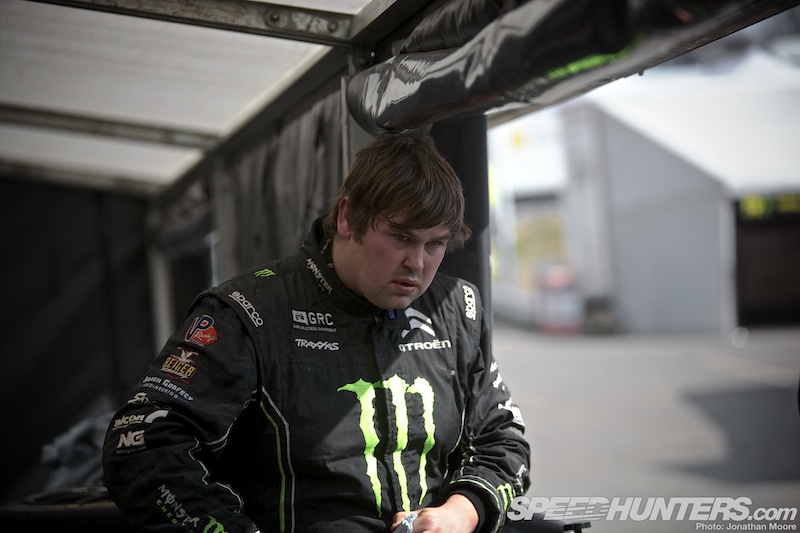
So what about the main competition? Local hero Liam Doran is looking to snatch that #1 away from the current champion, Timur Timerzyanov, but experienced a weekend to forget.
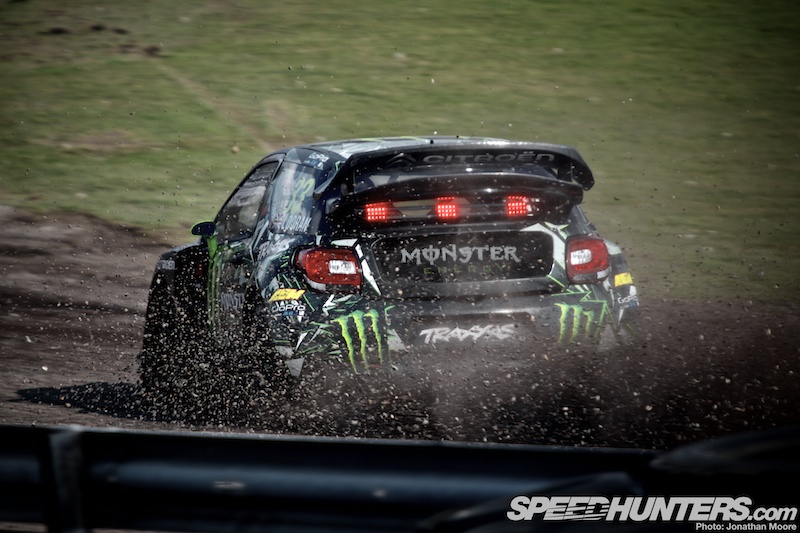
Using a brand new DS3 shell prepped over the winter, Liam won his first heat and set the sixth fastest time, but then his luck went south. Liam was as spectacular as ever, and when he was on it he was stupid quick.
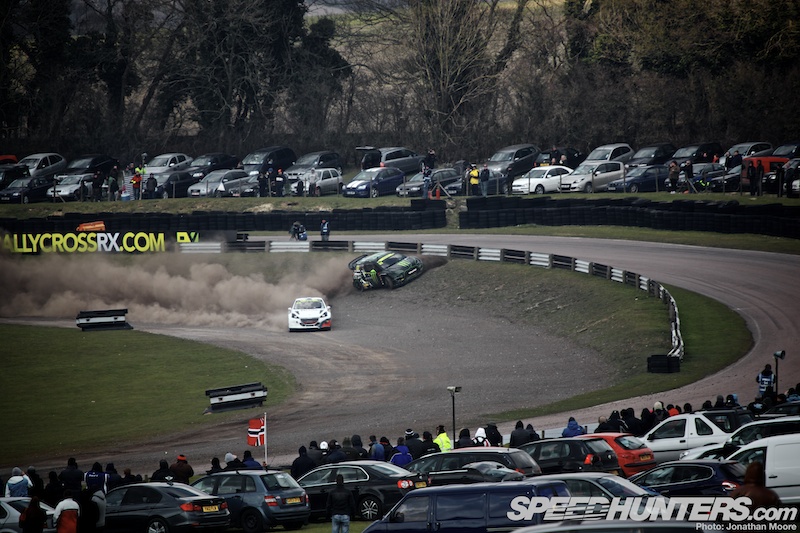
But even local knowledge sometimes isn’t enough in rallycross…
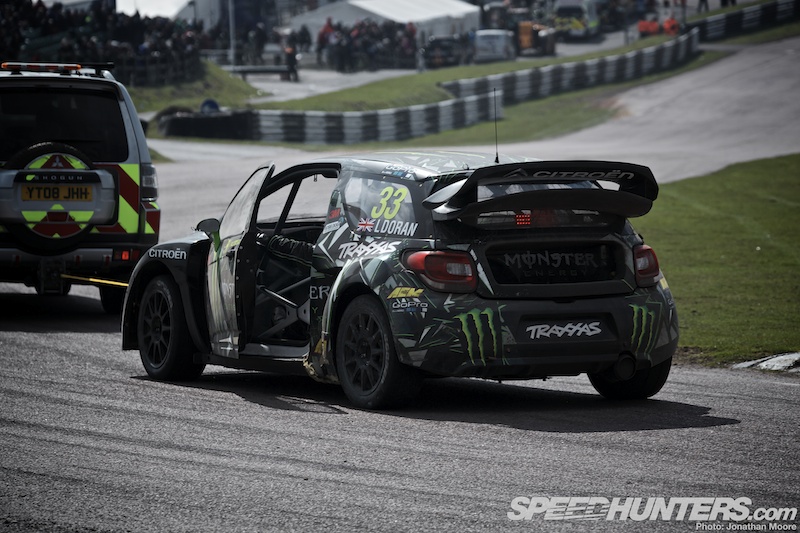
… and in two heats he ended up finishing behind a tow truck or worse.
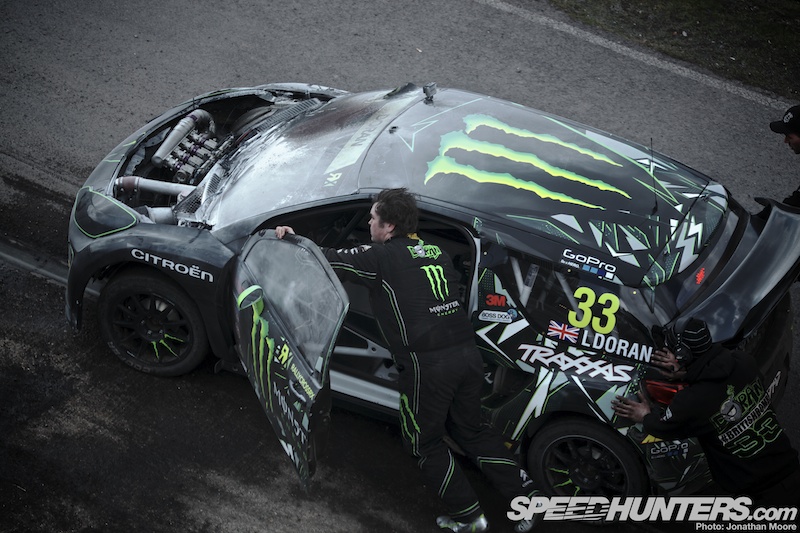
A minor fire in the engine bay was the insulting end to an already difficult heat. The mechanics worked furiously to get the car back in shape. Liam had done enough in the three heats where he crossed the line to make the semis, but a broken engine mounting meant he couldn’t take his place in the line-up. He’ll be hoping for more luck at his next event: the car was being shipped out immediately to Brazil for the next X Games event.
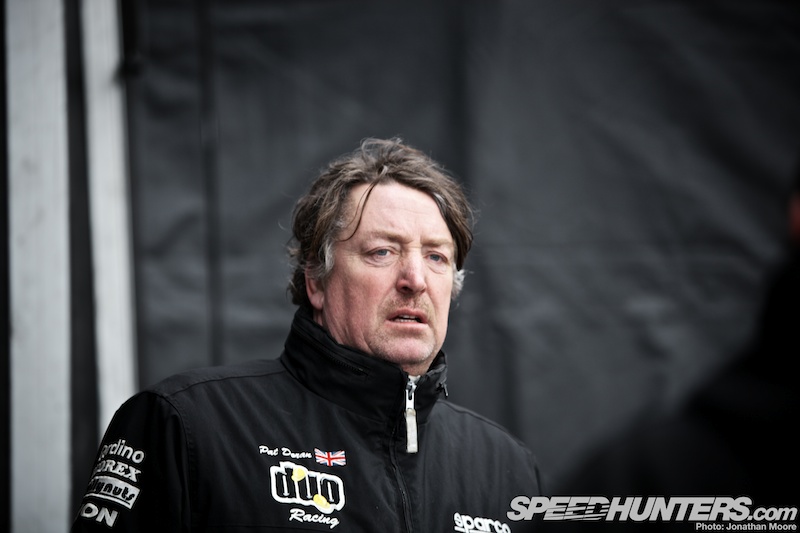
Liam’s father Pat (a four-time British champion) also entered the Rallycross RX opener as a local wildcard entry. The Dorans actually run the Lydden Hill facility.
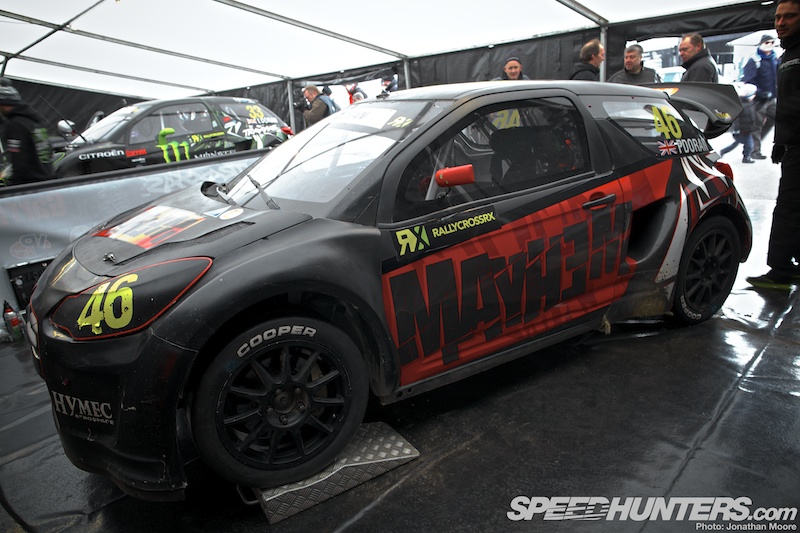
That meant three DS3s lined up under the Doran Motorsports awning: the team have seriously expanded this year.
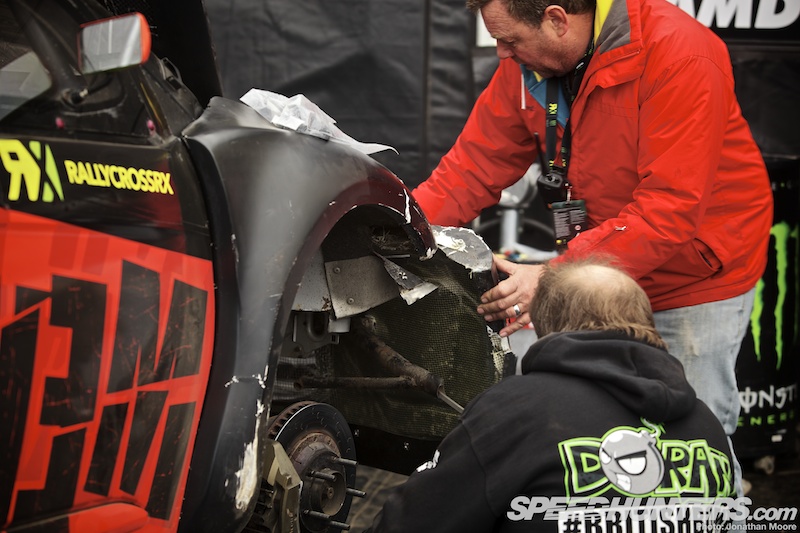
As with every other team (and let’s face it, most racing weekends in general), the mechanics were under constant pressure, usually to be seen either trying to work out the quickest way to repair ripped bodywork…

… or underneath the car surveying for breakages or patching up the constant suspension damage.
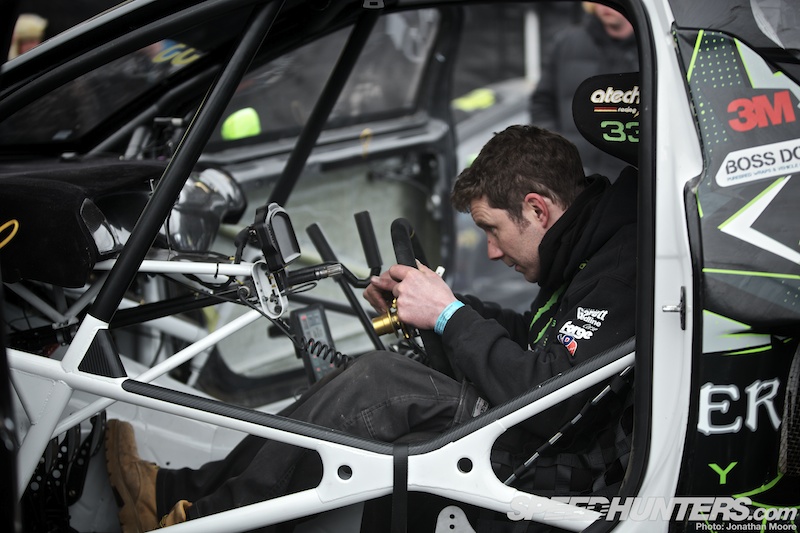
Whilst mechanics wielded screwdrivers, wrenches, hammers and axes, the engineers worked on nailing the all-important launch sequences, programming in initial throttle and boost settings and filling the awning with noise from the screaming four-cylinder.
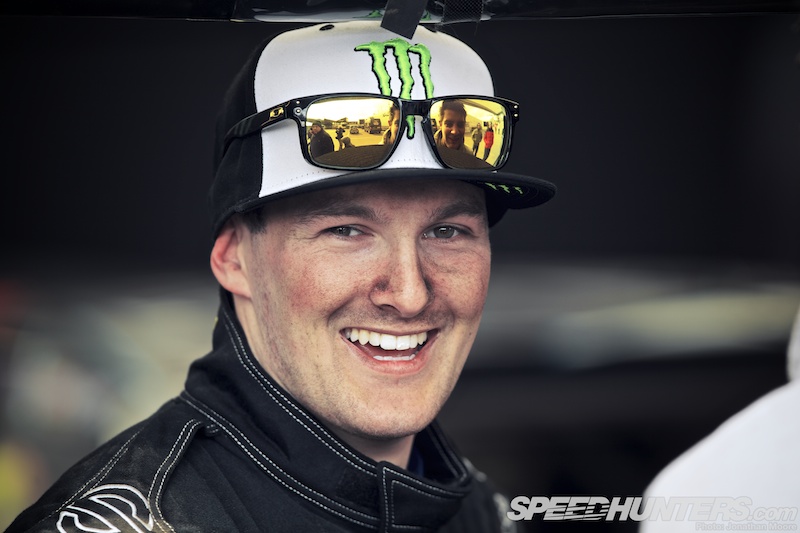
Andreas Bakkerud is the new face in the Doran team: he’s joined Liam for the full season of Rallycross RX.
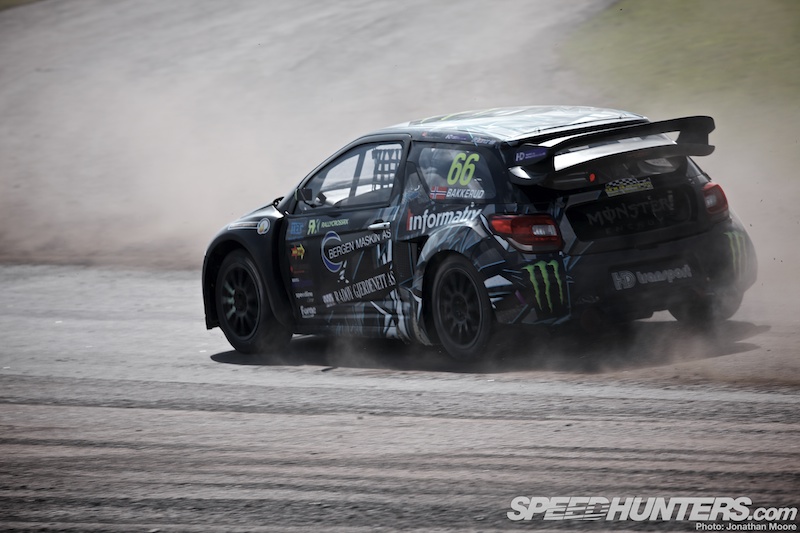
Equipped with Liam’s DS3 from last year, he unfortunately suffered the same bad luck as Liam. Gearbox problems in practice were a frustration, and then like Liam he wasn’t able to take up his place in the semis despite squeezing through in 12th place: engine trouble knocked him out.
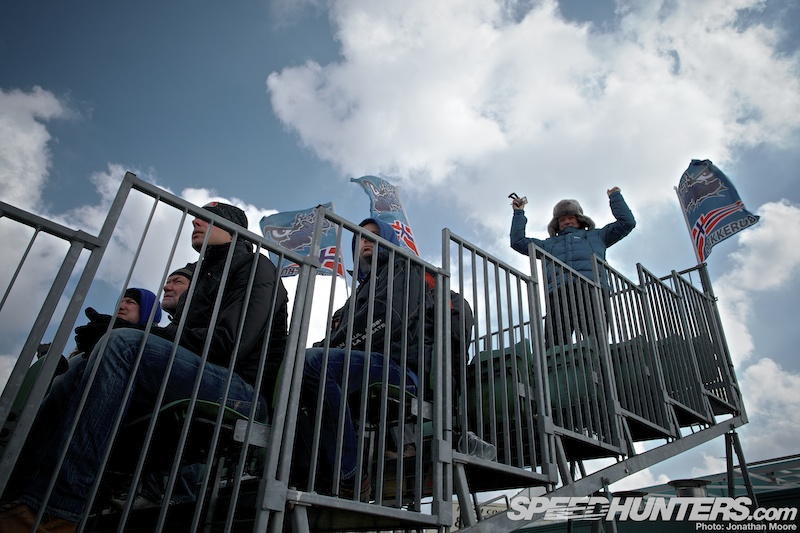
Even with Andreas out of the picture there was plenty for the strong Norwegian contingent of the audience to cheer about: over a quarter of the drivers were Norwegian! The name of everyone’s lips was of course Petter Solberg. Having seen his antics at Castle Combe’s Rally Day last year, I was massively looking forward to seeing him out on course in anger, and he didn’t disappoint.
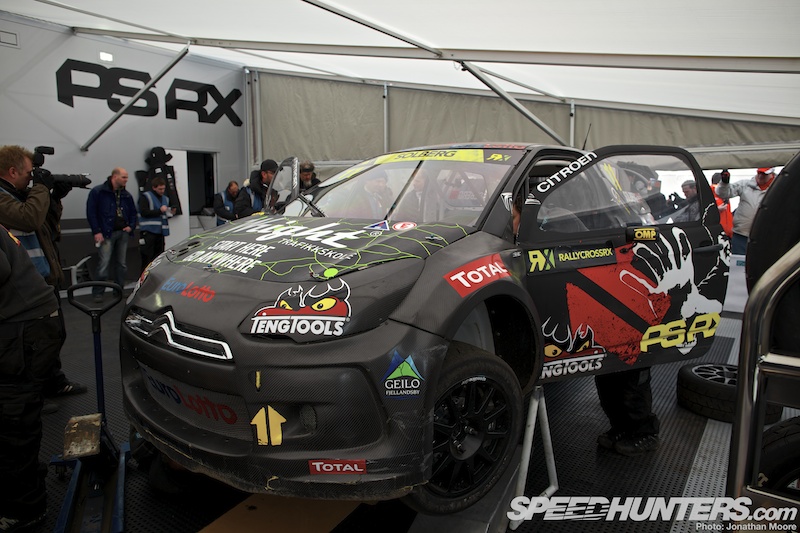
Solberg was the centre of media attention, surrounded by fans and the blue tabard-wearing media wherever he went. It was the first time he’d been in a rallycross car since 1996; his PSRX squad had been put together in double-quick time after a deal with Hansen Motorsports fell through. The team had less than two weeks to build and prep the new carbon-bodied DS3 Supercar, and it was only fired up a week before Lydden.
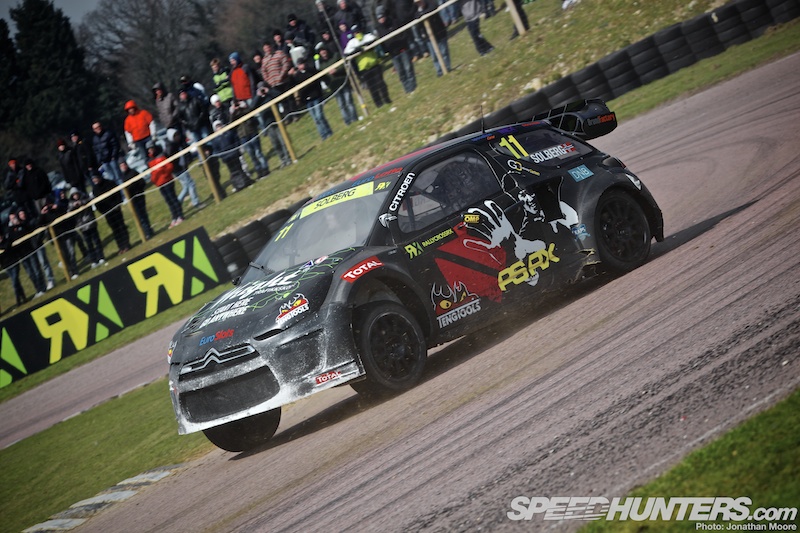
At 550hp, it’s double his old WRC car, but let’s face it, Petter’s not one to be shy of a little power under his right foot. But god knows how he had his car set up: into corners he’d flick the car in sideways to almost 90 degrees, but on the throttle the DS3 reared up on its hind quarters like the suspension was set to its softest, longest travel. Insane. In the hundred metres off the line, the car would be pointing at the sky under acceleration before burying its nose in the dirt with the rear up at 45 degrees, completely at odds with the flatter aspect of the other cars.
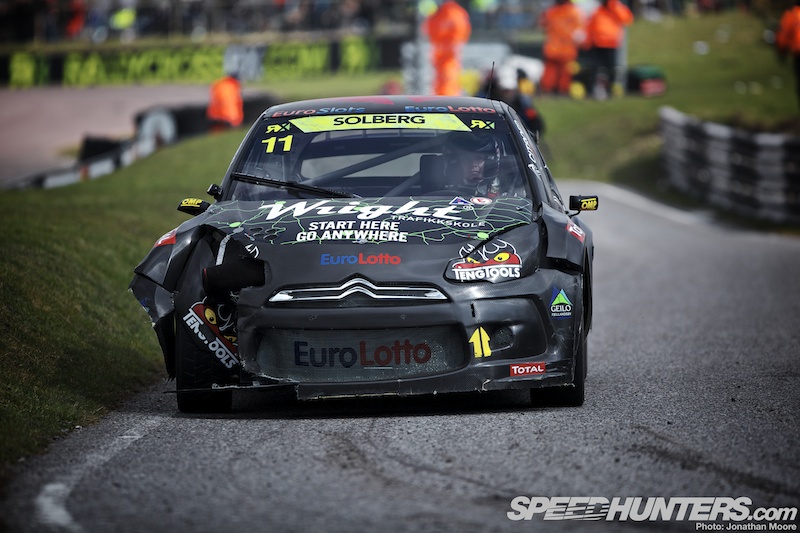
I’m trying to find out if that set-up was deliberate or not. Solberg’s was another DS3 to have a tough weekend: he jumped the start in Heat 1 by a mile and then suffered clutch problems that stranded him on the restart. Though he went on to win his second heat, setting the second fastest time from Tanner, on the next heat the driveshaft broke and sent him spearing off into the barrier, and he suffered centre differential problems all day, affecting turn-in. Somehow his times still put him into the semis…
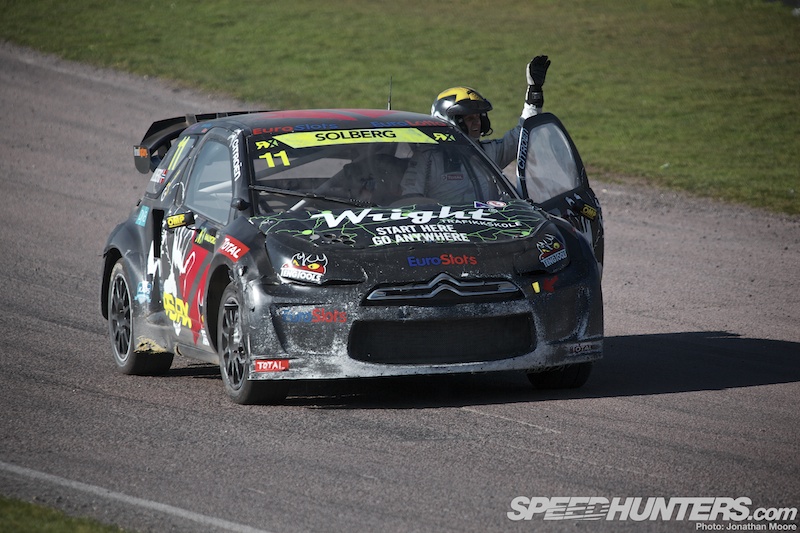
… only for power steering problems to mean he had no chance of fighting it out up front. Still, 10 points in the bag for his first round is better than nothing, and Petter is always the supreme entertainer, no matter the result. All through the weekend he was signing autographs and always smiling – only deadly serious when behind the wheel. Like Liam Doran, Petter is also taking on the X Games this year – can he pull off a Loeb-like result?
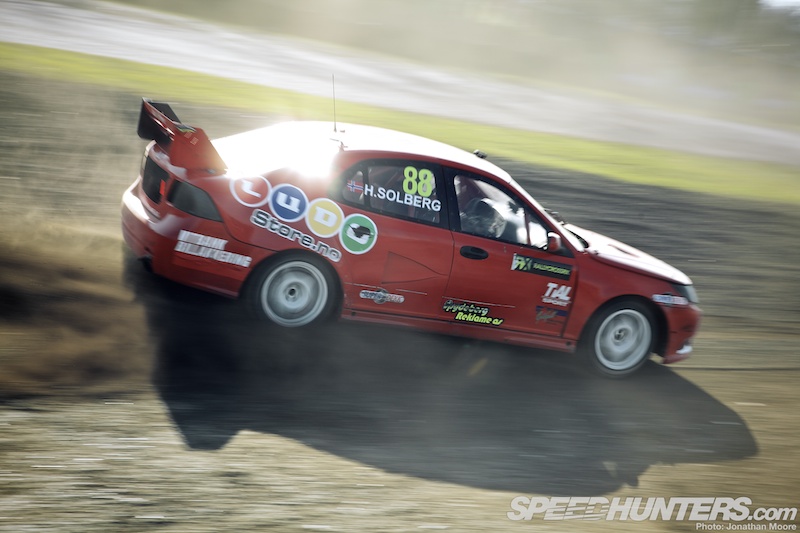
Older brother Henning also joined the RX grid for Lydden in a Saab 9-3 prepped by rally legend Per Eklund’s team. He also had plenty of rallycross experience on his CV, though interestingly Lydden would be the first opportunity for some time for the Solberg brothers to potentially go head to head – which they would do in the first semi.
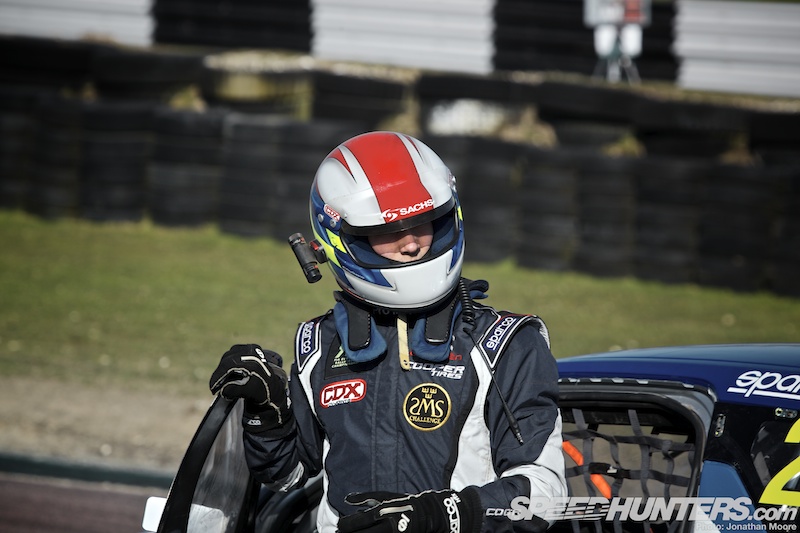
This man was someone who had the opposition worried. The surname was the first thing: Hansen. Timmy Hansen’s father Kenneth is a multiple rallycross champion (that’s multiple as in 14 times!). Oh, and his mother was also a European rallycross champion too! And the team have his 14-year-old younger brother coming up through the ranks as well.
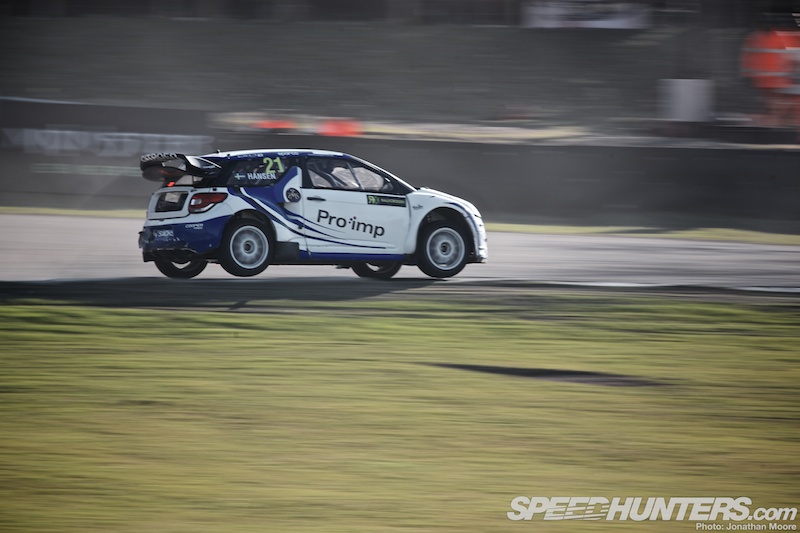
Timmy has made the move into RX from single seaters and has brought his proven speed with him. Having led a Hansen Motorsports 1-2-3 at the end of Sunday’s practice sessions, ahead of teammates Timur and Alexander Hvaal, Hansen then set the fastest Heat 1 time by almost two seconds – and again went fastest in Heat 2, breaking the three minute mark for the four-lap run.
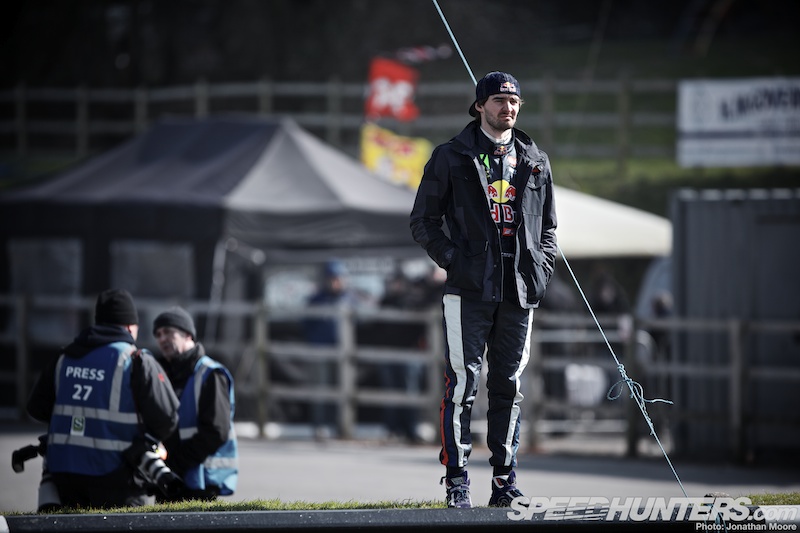
Surveying the strong opposition was Timur Timerzyanov, 2012’s champion. He was still driving for multiple championship winning team Hansen Motorsport, but now with full Red Bull backing.
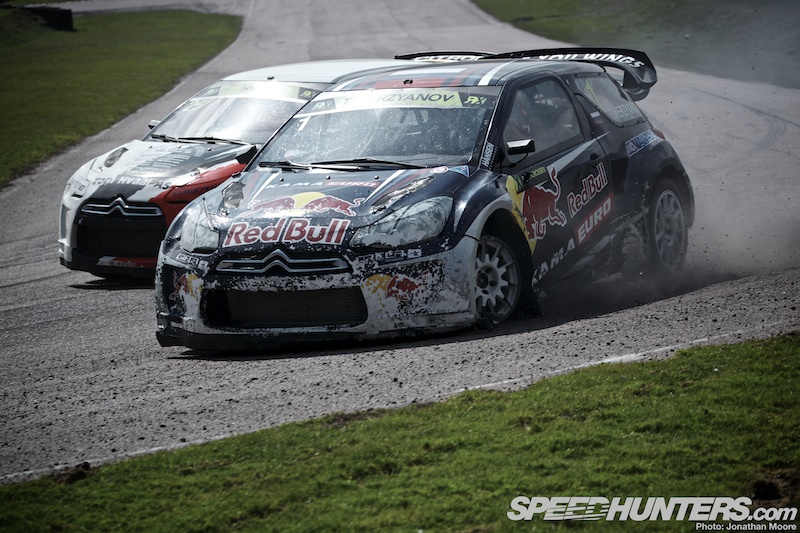
He was flat out as ever, but seemed to suffer an inordinate number of punctures over practice and the later heats and semis.
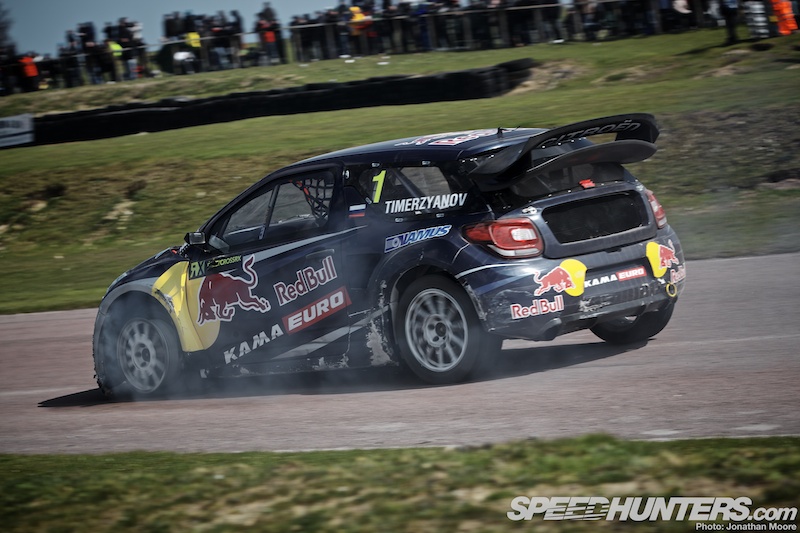
That said, he would just plough on regardless. Finish at all costs.

Actually, this is a good comparison of how flat all the other DS3s were compared to Solbergs. Notice how stiff Timur has his car set up, where even under acceleration and mounting a kerb at the same time the car looks that much more stable. In practice he’d been trying out new suspension geometry, but ended up changing back to the set-up he knew from last year. He’s never had the best of luck in the UK, with a highest place finish of fifth, but despite all the rubber problems he still somehow managed to qualify on the front row for the A Final, with his fastest time in the second semi just a fraction off the pole time set by Tanner Foust in his preceding semi.

Ah, Tanner. Timur might have had #1 on his car, but it was Tanner Foust who put his car in the number one spot for the final. Tanner Foust had a quietly confident air about him all weekend, this being a one-off outing for the American.

His new Fiesta ST was looking meaner than ever with its reversed livery, though he was another to suffer a puncture in an early heat after colliding with Timur Timerzyanov. But he then had the reverse fortunes of others; getting his bad luck out of the way early, Tanner went on to set the third, first and second fastest times respectively in the following heats.
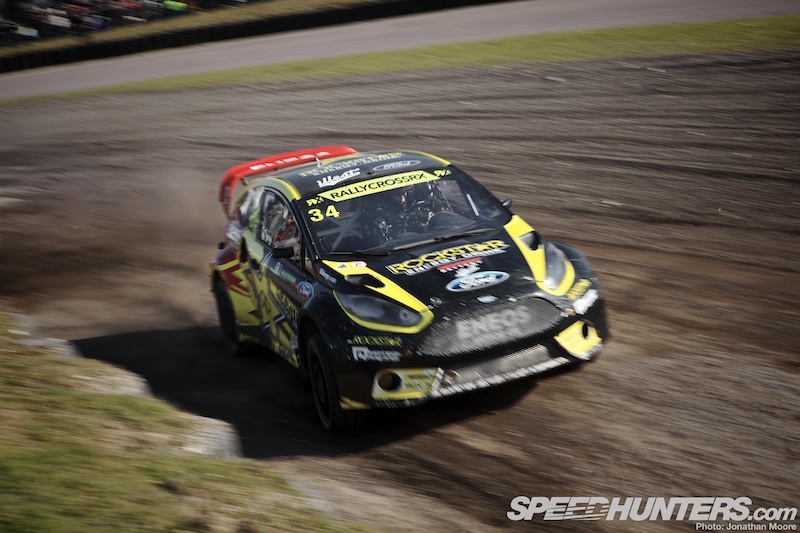
Out on track he meant business and was utterly spectacular, already at 90 degrees to the track come the apex of the first corner and more than happy to fight it out panel to panel in the midst of the dust storms.
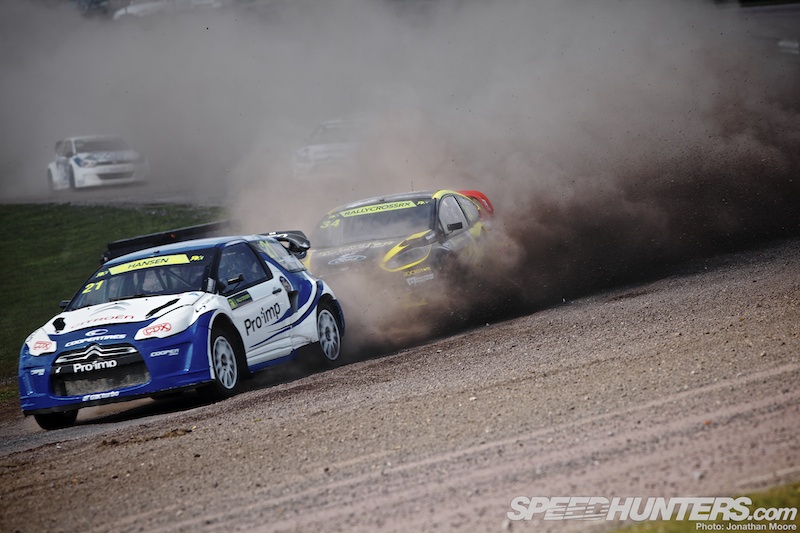
Into the semis, and both Solbergs would line up in the first race, though neither got through – Foust destroyed the opposition in that race after fighting by Timmy Hansen.

Timur similar dominated the second semi, to line up alongside Tanner for the final. By this stage the cars all looked decidedly secondhand…
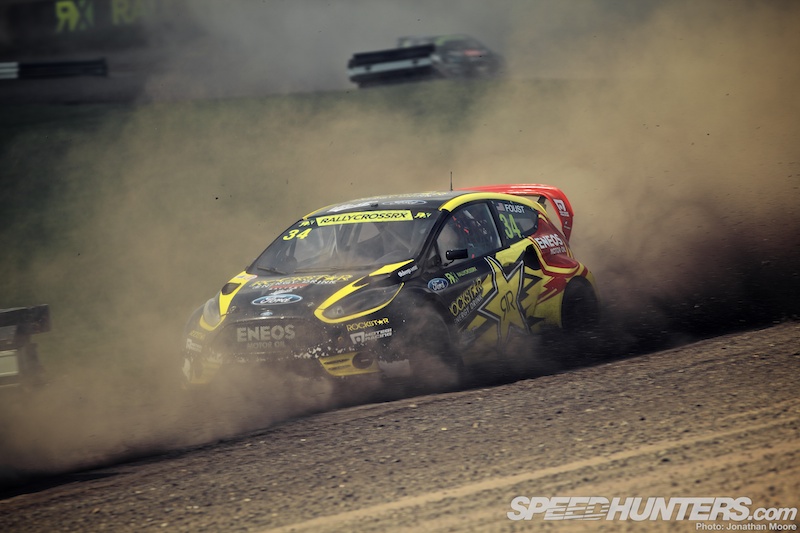
We all settled in for the final epic battle. Timur, Jussi-Petteri Leppihalme and local wildcard entry (and engine maestro) Julian Godfrey all hooked left to take their Joker Laps early, whilst Tanner fired off into the lead with Timmy and Frenchman Davy Jeanney glued to his rear. But Tanner was utterly rampant: he saw off all the opposition to easily take the win, coming home almost five seconds ahead of Jussi-Petteri’s Focus MkII.
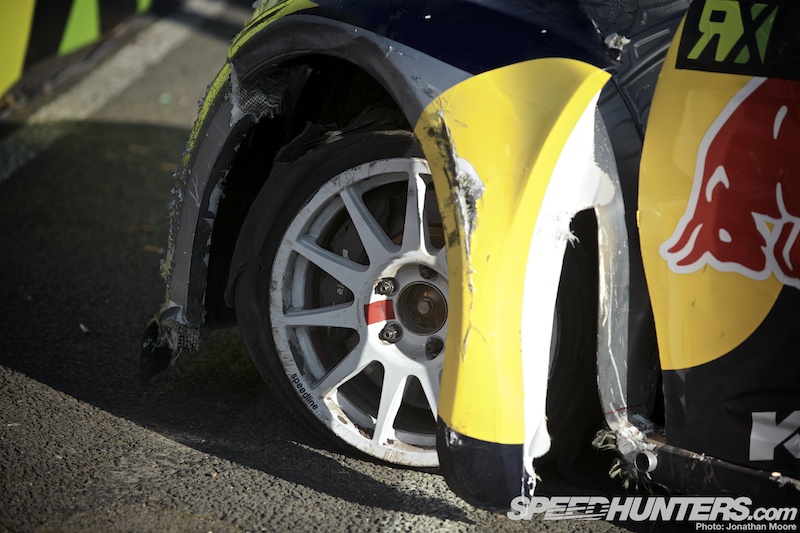
Yet another puncture for Timur meant he pulled off, though picked up points for sixth: he clipped the lethal lefthand kerb on the entry to the chicane and immediately lost the tyre. In parc fermé after the race, it looked like a collection of cars ready for the scrapheap – but they need to be back and in fighting condition for the next round in Portugal at the end of April.
Check out the action in video form here.
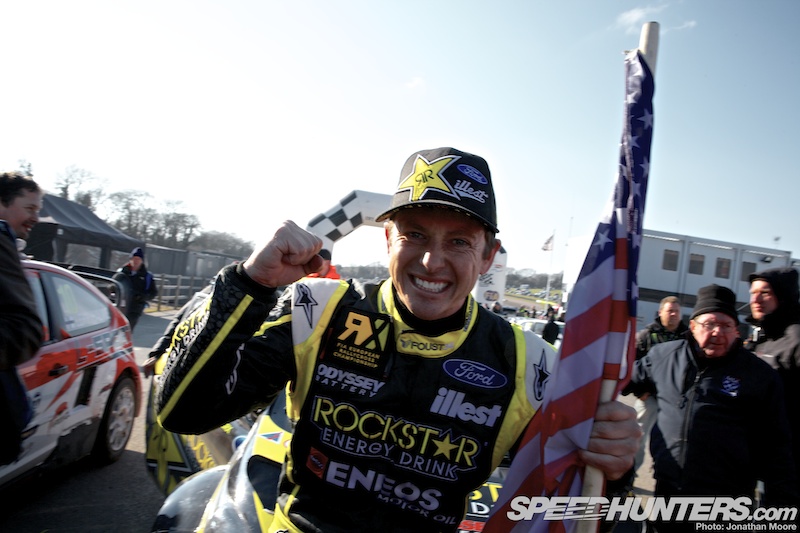
For Tanner, it’s the second straight win at Lydden. He picked up the trophy, a hard charger award and the champagne – and perhaps the desire to come back to Europe again in the near future.
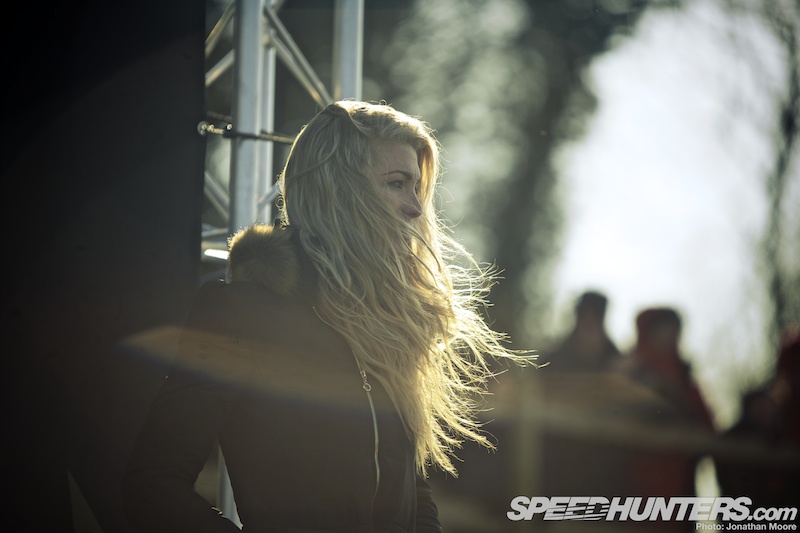
With the sun setting on the first round, the future is looking bright for RallycrossRX: eight more rounds await the series, but there’s also Global Rallycross, X Games and the many European series. So much rallycross, so little time…
Jonathan Moore
jonathan@dev.speedhunters.com
Instagram: speedhunters_jonathan
















